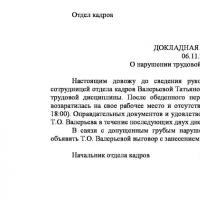Break-even point calculation: formula, chart
The main goal of any business is to make money. Therefore, before starting a new business, an entrepreneur must complete the correct breakeven point calculation . This point shows at what point in time the business will cover all kinds of losses, finally starting to bring real profit. In fact, this is the usual calculation of the efficiency of the enterprise. The correct finding of this point will show businessmen and investors how profitable it is to engage in a project, what risks exist and when the investments will pay off. Based on this information, the final decision will be made.
What is a break-even point
The breakeven point is the amount of services rendered or sales at which profit is zero. In English, this concept sounds like Break evenpoint, or simply BEP for short. From the course of economics, we know that profit is the difference between TotalRevenu (income) and TotalCost (expenses). BEP is usually measured in cash or in kind. By calculating this indicator, you can understand how many services or goods you need to sell in order to break even. If sales are lower, then you will work in the negative, higher - make a profit.
TB is an important indicator for an enterprise. According to it, you can determine how efficiently the company works, whether it is stable in the market and spends money. If the BEP is growing, then you should pay attention to cost optimization (in the absence of changes in the structure of the company). The break-even point can change when expanding or contracting, when prices change, when new trade relations are opened, etc. But be that as it may, BEP is one of the key business indicators - it is by it that the prospects of work and investments are determined.
Knowing TB, you can decide for yourself:
- Does it make sense to invest in the enterprise and is it really able to sell so many goods to break even?
- Determine the effectiveness of work after a while (ideally, TB should remain the same as it was).
- Determine the cost of production. Perhaps it would make sense to change the quantity of goods produced when production falls and vice versa.
- Attract outside investors by showing them effective business plans based on market research and BEP metrics.
How to calculate
So, we have dealt with the concept of TB. Now let's take a look how to calculate breakeven point . To do this, you need to analyze your company. Determine which costs are fixed (rent, utilities, wages, taxes, equipment depreciation) and which are variable (raw materials, premiums, expansion, unexpected purchases, parts).
Note:fixed costs are virtually constant. You can’t refuse them in any way, although you can make a delay in payments (for example, agree on a transfer of rent).
Fixed costs change only when something global happens: you open a new shop, your rent increases, tax or labor laws change, there is a serious depreciation of money (inflation).

The correct calculation of the break-even point will allow you to conduct a detailed analysis of the enterprise
Variable costs mainly directly depend on the volume of production and sales. They change with the market. For example, an order came in that overlaps your usual production by 50% - you will have to purchase more raw materials, machines and people will work in 2 shifts, so you will have to pay more for utilities and pay bonuses.
It should be borne in mind here that variable costs remain in the same place when the volume of production changes, that is, they are considered conditionally fixed, and breakeven point shows how fast you get to zero.
Calculation principle
A point can be found in two different ways:
- In terms of value.
- In kind.
Let's figure out how to correctly calculate TB using the second method, since it is more common. To do this, you need to define several indicators:
- FC - the amount of fixed costs;
- P is the cost of one unit of service or product;
- AVC is the amount of variable costs.
Once the data is in, you can easily calculate your BEP using the formula BEP=FC/(P-AVC).
 Ready-made business plan with calculations using the example of a web studio
Ready-made business plan with calculations using the example of a web studio Registration of an internal memorandum: sample document and drafting rules
Registration of an internal memorandum: sample document and drafting rules Break even. Formula. Example of model calculation in Excel. Advantages and disadvantages
Break even. Formula. Example of model calculation in Excel. Advantages and disadvantages Advance report is ... Advance report: sample filling
Advance report is ... Advance report: sample filling How to stitch documents with threads by hand?
How to stitch documents with threads by hand? Disciplinary sanction for non-fulfillment of official duties
Disciplinary sanction for non-fulfillment of official duties Binding your book
Binding your book